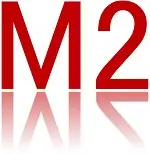SLS 3D printing served in the automotive industry
Selective Laser Sintering 3D Printing is a popular technology that is extensively used in the automotive industry for designing and manufacturing complex parts. This technology uses a laser to fuse powdered materials together layer by layer to create a 3D object.
One major application of SLS 3D printing in the automobile industry is in the production of lightweight parts. In recent years, there has been a growing demand for lightweight car parts that can improve fuel efficiency and decrease emissions. SLS 3D printing allows manufacturers to produce complex, lightweight parts with high strength-to-weight ratios that are difficult or impossible to make using traditional manufacturing methods.
Another advantage of SLS 3D printing is its ability to produce customized parts with unique geometries. With SLS 3D printing, it is possible to produce parts with intricate shapes and features that would be impossible to replicate using conventional machining techniques. This makes SLS 3D printing ideal for prototyping and small-batch production of custom car parts.
SLS 3D printing is also useful for producing parts with high temperature resistance. Some materials used in SLS 3D printing, such as polyamide, have excellent thermal properties, making them ideal for use in engine components, exhaust systems, and other high-temperature applications.
Moreover, SLS 3D printing offers significant cost savings compared to traditional manufacturing methods. It eliminates the need for expensive molds and tooling, which can save companies considerable money in production costs. Additionally, the ability to produce parts on demand means that companies can reduce their inventory costs and keep pace with changing consumer demands.
Some well known cases
BMW: In 2019, BMW announced that it was using SLS 3D printing to produce water pump pulleys for its DTM race cars. The pulleys were made from a high-temperature-resistant polyamide material and featured a complex lattice structure that reduced weight while maintaining strength and durability. The use of SLS 3D printing allowed BMW to quickly iterate on the design and produce custom parts with minimal lead times.
Ford: In 2020, Ford revealed that it had used SLS 3D printing to produce a new intake manifold for its Mustang Shelby GT500. The manifold was made from nylon powder and featured a complex internal geometry that improved airflow and performance. According to Ford, the use of SLS 3D printing reduced the production time for the manifold by several months compared to traditional manufacturing methods.
Local Motors: Local Motors, a US-based vehicle manufacturer, uses SLS 3D printing to produce custom car parts on demand. Using a combination of SLS 3D printing and traditional manufacturing methods, Local Motors is able to produce unique, low-volume vehicles that can be customized to meet individual customer needs. For example, the company has used SLS 3D printing to produce interior components such as dashboard panels and door handles.
One of our previous project about SLS 3D printing for automotive parts (four-port intake manifold) for your review.
However, one limitation of SLS 3D printing is that the process can be time-consuming, especially for large parts. The process of sintering each layer can take several hours, which can increase the overall production time for larger parts. Additionally, the cost of SLS 3D printers and materials can be relatively high, which could be a barrier for some companies.
The choice of materials for SLS 3D printing in the automotive industry is critical to ensure that the parts produced meet the necessary requirements for strength, durability, and temperature resistance. Some factors that need to be considered when selecting materials for SLS 3D printing include:
Mechanical properties: Automotive parts must be able to withstand a wide range of mechanical stresses and strains, including impact, vibration, and fatigue. Materials used in SLS 3D printing should have high strength and stiffness to ensure that the parts can perform under these conditions.
Thermal properties: Automotive parts often operate in high-temperature environments, such as engine components and exhaust systems. Materials used in SLS 3D printing should have high temperature resistance to ensure that the parts do not deform or fail under these conditions.
Chemical resistance: Automotive parts may be exposed to a variety of chemicals, including fuels, oils, and solvents. Materials used in SLS 3D printing should be able to withstand exposure to these chemicals without degrading or weakening.
Cost: The cost of materials is an important consideration for automotive manufacturers. While some high-performance materials may offer superior mechanical and thermal properties, they may also be more expensive to produce. Manufacturers must balance the cost of materials with the performance requirements of the parts being produced.
Our materials commonly used in SLS 3D printing for automotive applications include:
Polyamide (Nylon): Polyamide is a popular material for SLS 3D printing due to its high strength, stiffness, and temperature resistance. It is frequently used in engine components, such as air intake manifolds and water pump pulleys.
Carbon fiber reinforced nylon: Carbon fiber reinforced nylon is a composite material that combines the strength and stiffness of carbon fiber with the flexibility and ease of use of nylon. This material is ideal for producing lightweight, high-performance parts, such as suspension components and body panels.
SLS 3D printing is an innovative technology that has widespread applications in the automotive industry. It offers several advantages over traditional manufacturing methods, including the ability to produce lightweight, customized, and high-temperature resistant parts at relatively low cost. However, the technology is not without its limitations, and companies must carefully consider the cost and production time when deciding whether to use SLS 3D printing for their automotive customized components.
Contact Us










